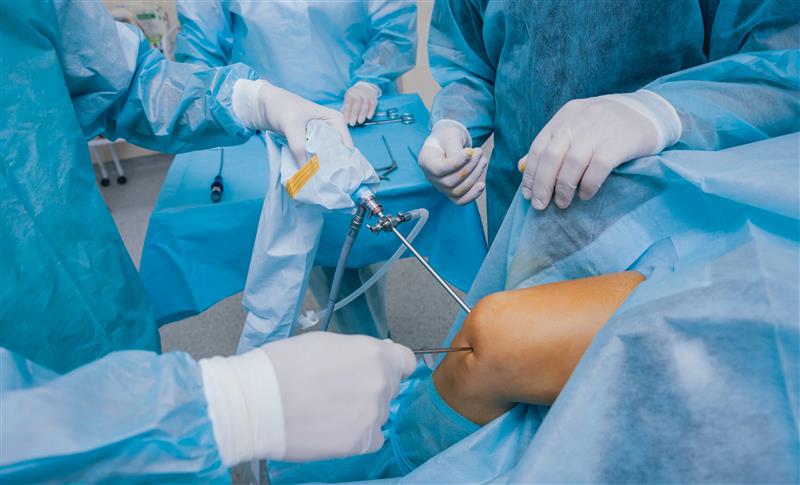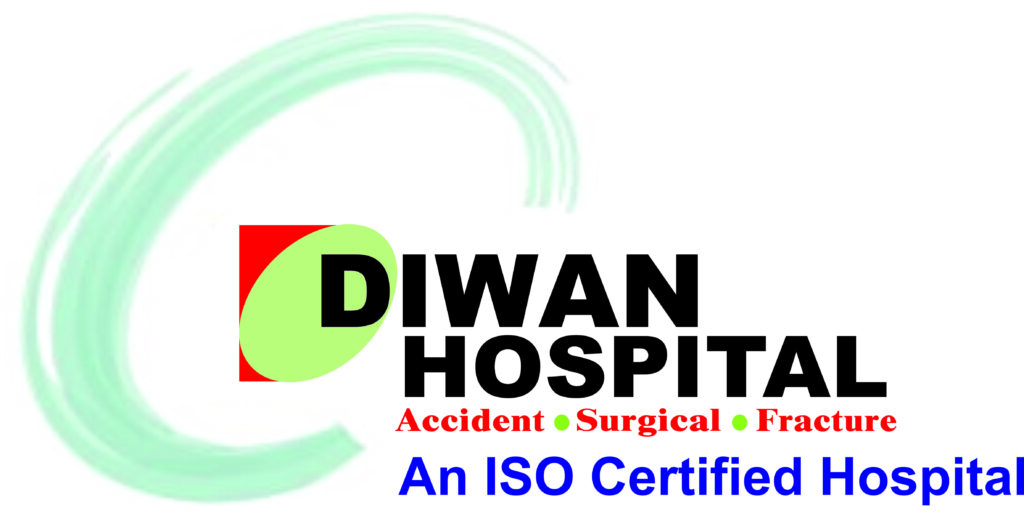Arthroscopy

Overview
Arthroscopy is a minimally invasive surgical procedure used to diagnose and treat joint problems. It involves the use of a small camera, called an arthroscope, which is inserted into the joint through a small incision. The camera provides a clear, real-time view of the inside of the joint on a monitor, allowing the surgeon to accurately assess the condition of the joint and perform necessary repairs or treatments with precision.
Arthroscopy is commonly performed on major joints like the knee, shoulder, elbow, wrist, hip, and ankle. This procedure is often preferred over traditional open surgery because it requires smaller incisions, reduces recovery time, and results in less scarring. Arthroscopy can be used to treat a variety of joint conditions, including torn cartilage, ligament injuries, arthritis, and inflammation.
Arthroscopy is commonly performed on major joints like the knee, shoulder, elbow, wrist, hip, and ankle. This procedure is often preferred over traditional open surgery because it requires smaller incisions, reduces recovery time, and results in less scarring. Arthroscopy can be used to treat a variety of joint conditions, including torn cartilage, ligament injuries, arthritis, and inflammation.
Causes :
Arthroscopy may be recommended for a variety of conditions that affect the joints, particularly when other conservative treatments such as medication, physical therapy, or rest have not provided sufficient relief. Common causes for arthroscopic surgery include:
- Joint Injuries: Injuries such as ligament tears, meniscus damage, or cartilage damage that affect the knee, shoulder, or other joints.
- Arthritis: Chronic joint conditions like osteoarthritis or rheumatoid arthritis can lead to joint pain, inflammation, and decreased mobility. Arthroscopy can help remove damaged tissue or clean out the joint.
- Joint Inflammation: Conditions like bursitis or tendinitis that cause inflammation in the joints may require arthroscopic surgery to remove damaged tissue and alleviate pain.
- Loose Bodies in the Joint: Fragments of bone or cartilage that become loose in the joint and cause pain or instability can be removed using arthroscopy.
- Rotator Cuff Tears: Common in the shoulder, rotator cuff tears can be diagnosed and treated with arthroscopic techniques, helping to repair the damaged tendon.
- Meniscus Tears: In the knee, meniscus tears, which affect the cartilage that cushions the joint, can be repaired or removed through arthroscopic surgery.
- Labral Tears: Damage to the cartilage in the hip or shoulder (labrum) can be treated with arthroscopy to help stabilize the joint and restore function.
Symptoms :
Arthroscopy is often considered when the following symptoms are present, especially if conservative treatments like rest, ice, or physical therapy have failed:
- Chronic Joint Pain: Persistent or worsening pain in the joint, especially during movement, that does not respond to non-surgical treatments.
- Swelling and Stiffness: Ongoing swelling, stiffness, or a feeling of instability in the joint, making it difficult to move or bear weight.
- Limited Range of Motion: Difficulty fully extending or bending the joint, or inability to perform normal movements due to joint pain or mechanical blockages.
- Instability: A feeling that the joint is unstable or may “give way” during normal activity, which can be caused by ligament damage or cartilage problems.
- Catching or Locking Sensations: If the joint catches, locks, or gives you the sensation that something is obstructing its movement, it may indicate the presence of loose cartilage or bone fragments.
- Joint Deformity: Visible changes in the shape or alignment of the joint, which may indicate significant internal damage that requires surgical intervention.
The Approach to Arthroscopy
Arthroscopy is typically performed as a day surgery or outpatient procedure, meaning most patients can return home the same day. The general approach involves the following steps:
- Pre-Surgical Evaluation: Before the procedure, the surgeon will perform a detailed assessment, which includes a review of your medical history, physical examination, and diagnostic imaging (such as X-rays or MRIs) to determine the extent of the joint problem.
- Anesthesia: Arthroscopy is typically performed under either local anesthesia (numbing only the area around the joint) or general anesthesia (putting the patient to sleep). The type of anesthesia will depend on the joint being treated and the complexity of the procedure.
- Making Incisions: Small incisions (usually no longer than half an inch) are made around the affected joint. One incision is used to insert the arthroscope, a small tube with a camera that transmits images of the joint to a monitor. Additional incisions may be made for the insertion of surgical instruments.
- Diagnostic and Therapeutic Procedure: Once the joint is clearly visible on the monitor, the surgeon can assess the damage and, if necessary, perform treatment. This may include trimming damaged tissue, repairing tears, removing loose bodies, or cleaning out debris from the joint. In some cases, a joint lavage (flushing with sterile fluid) is used to clean the joint of any inflammation or debris.
- Post-Operative Care: After the procedure, the small incisions are closed, often with sutures or adhesive strips. The joint may be bandaged, and in some cases, a splint or sling is used to support the joint during the initial healing period.
- Recovery and Rehabilitation: Arthroscopic surgery typically involves a quicker recovery time than open surgery. Most patients are encouraged to move the joint soon after surgery to promote circulation and reduce stiffness. Physical therapy is often recommended to restore strength, flexibility, and range of motion in the joint. Full recovery time can vary, but many patients return to regular activities within a few weeks to months, depending on the joint and the extent of the procedure.
Our Process for Arthroscopy Treatment
At our Hospital, we ensure that each patient receives high-quality, individualized care throughout their arthroscopic surgery journey. Our process includes:
- Consultation and Diagnosis: The first step in the process is a comprehensive consultation with one of our orthopedic specialists. We review your medical history, perform a thorough physical examination, and may recommend diagnostic imaging (X-rays, MRIs, or CT scans) to identify the source of your joint problem.
- Treatment Planning: After the diagnosis, we will develop a customized treatment plan based on your specific needs. If arthroscopy is the best course of action, we will discuss the procedure in detail, including what to expect before, during, and after surgery.
- Pre-Surgical Instructions: Before your procedure, we will provide you with detailed instructions to prepare for surgery. This may include guidelines on fasting, medications to avoid, and any necessary arrangements for transportation after the procedure.
- The Arthroscopic Procedure: On the day of your surgery, our experienced orthopedic surgeons will perform the arthroscopy using advanced, minimally invasive techniques. The procedure is designed to be as precise as possible to minimize disruption to the surrounding tissues.
- Post-Operative Care: Following your surgery, we will monitor your recovery and provide post-operative instructions to ensure optimal healing. This may include managing pain, swelling, and caring for the small incisions.
- Rehabilitation and Recovery: Depending on the joint treated, we will recommend a tailored rehabilitation program to help you regain full mobility and strength. Our physical therapists will guide you through exercises and stretches designed to restore function and reduce stiffness.
- Follow-Up Care: We schedule regular follow-up visits to monitor your recovery progress, address any concerns, and ensure the joint is healing properly. Most patients are able to return to daily activities relatively quickly, with less downtime than traditional surgery.
